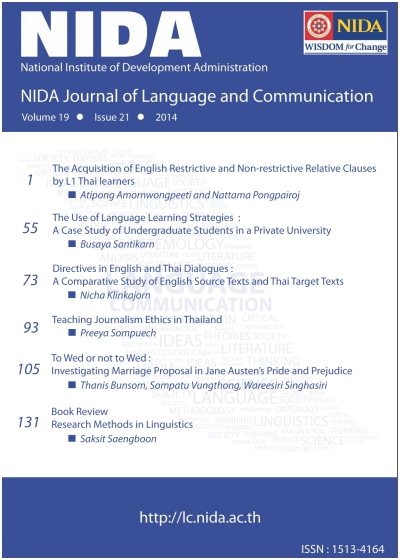To Wed or not to Wed: Investigating Marriage Proposal in Jane Austen’s Pride and Prejudice
Keywords:
Pride and Prejudice, Marriage proposals, Compliance-gaining strategies, Resistance Strategies, Victorian eraAbstract
Jane Austen’s Pride and Prejudice is a classic literary work widely read and studied all over the world. Considered one of the most famous pieces of writing in Austen’s time, the novel has been thoroughly analysed especially in terms of its Victorian socio-cultural context where women’s lives and future happiness depend greatly on good marriages. Wishing to shed further light on the persuasive techniques deployed in different marriage proposals, we examine three significant dialogues: Mr. Collins’s proposal to Elizabeth Bennet, Mr. Darcy’s first proposal to Elizabeth Bennet and Mr. Darcy’s final proposal to Elizabeth Bennet. The analysis is based on Marwell and Schmitt (1967)’s theory of compliance-gaining strategies and Jacks and Cameron (2003)’s theory of resistance strategies. The findings suggest that in attempting to manipulate Elizabeth Bennet into accepting the proposals, Austen’s male characters employ different persuasive techniques in the three dialogues. Interestingly, the findings also suggest further implications on what marriage should be which is completely contradicting to the socio-cultural environment of the Victorian era.Downloads
How to Cite
Issue
Section
License
By submitting a manuscript, the author transfers the copyright for the article to School of Language and Communication, National Institute of Development Administration (NIDA), if and when the manuscript is accepted for publication. Though the journal is an open-access, reproduction of any material published in NIDA Journal of Language and Communication for non-personal and/or commercial purpose requires a written permission from School of Language and Communication, National Institute of Development Administration (NIDA).






